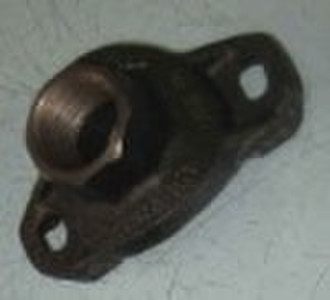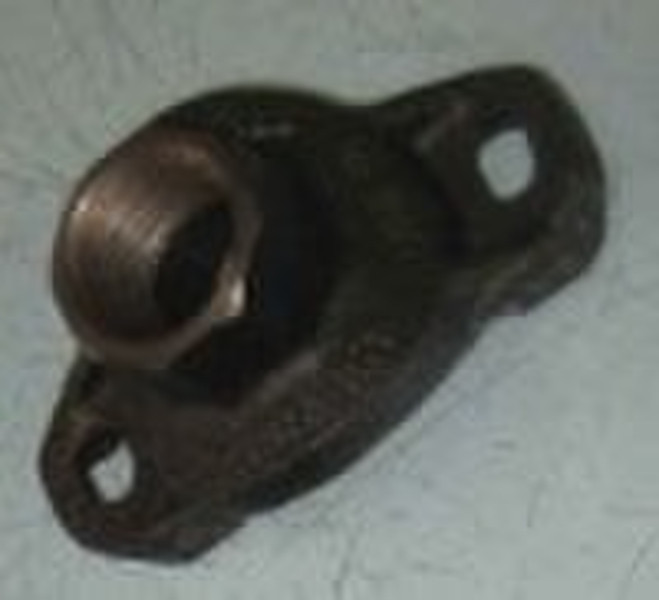壳牌模具铸造的部分
原价: 1,00 USD
重庆市, 中国
生产能力:
1000 吨 / 月

Hongjie Wang
联系人姓名
基本信息
| 出生地 | China (Mainland) |
|---|
Shell molding process offers better surface finish, better dimensional tolerances, and higher throughput due to reduced cycle times. A heated (200 ºC / 392 ºF) metal pattern is covered with a mixture of sand and thermoset plastic. This causes a skin of about 3.5 mm (0.125 in) of sand/plastic mixture to adhere to the pattern. This skin is removed from the pattern to form the "shell mold". The two halves of the shell mold are secured together and the metal is poured in the shell to form the part. Once the metal solidifies, the shell is broken. This process can produce complex parts with good surface finish 1.25 µm to 3.75 µm (50 µin to 150 µin) rms, and dimensional tolerance of 0.5 %. Size limits of 30 g to 12 kg (1 oz to 25 lb). Minimum thicknesses can be as low as 1.5 mm (0.062 in) to 6.25 mm (0.25 in), depending on the material. A good surface finish and good size tolerance reduce the need for machining. A fairly high capital investment is required, but high production rates can be achieved. The process overall is quite cost effective due to reduced machining and cleanup costs. The materials that can be used with this process are cast irons, and aluminum and copper alloys. Typical parts made with this process are connecting rods, gear housings, lever arms etc.
交货条款及包装
Packaging Detail: cartons Delivery Detail: 1 to 3 months
付款条款
Documents Against Acceptance
Documents Against Payment
Letter of credit
Telegraphic transfer
-
支付方式
我们接受:









